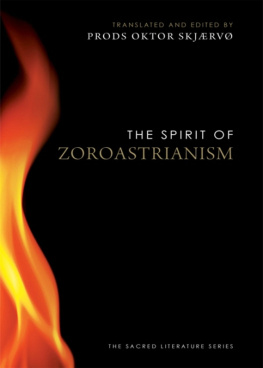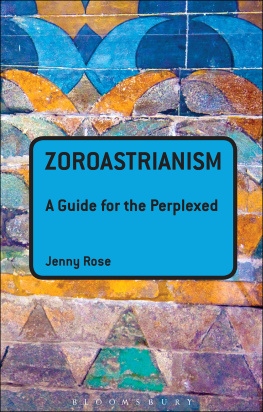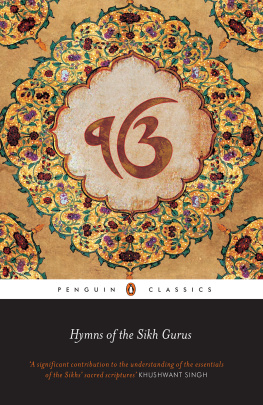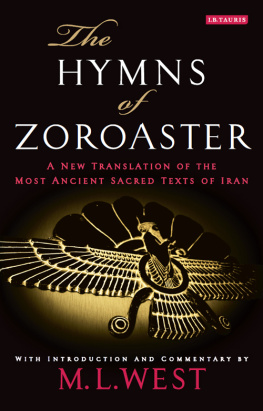
Hay House Publishers (India) Pvt. Ltd.
Muskaan Complex, Plot No.3, B-2 Vasant Kunj, New Delhi-110 070, India
Hay House Inc., PO Box 5100, Carlsbad, CA 92018-5100, USA
Hay House UK, Ltd., Astley House, 33 Notting Hill Gate, London W11 3JQ, UK
Hay House Australia Pty Ltd., 18/36 Ralph St., Alexandria NSW 2015, Australia
Hay House SA (Pty) Ltd., PO Box 990, Witkoppen 2068, South Africa
Hay House Publishing, Ltd., 17/F, One Hysan Ave., Causeway Bay, Hong Kong
Raincoast, 9050 Shaughnessy St., Vancouver, BC V6P 6E5, Canada
Email: contact@hayhouse.co.in
www.hayhouse.co.in
Copyright Rohinton Fali Nariman 2016
The moral right of the author has been asserted.
The views and opinions expressed in this book are the authors own and the facts are as reported by him, which have been verified to the extent possible, and the publishers are not in any way liable for the same.
All rights reserved. No part of this book may be reproduced by any mechanical, photographic, or electronic process, or in the form of a phonographic recording; nor may it be stored in a retrieval system, transmitted or otherwise be copied for public or private use other than for fair use as brief quotations embodied in articles and reviews, without prior written permission of the publisher.
ISBN 978-93-85827-23-5
ISBN 978-93-85827-24-2 (ebook)
While every effort has been made to trace copyright holders for some of the pictures used inside this book, this has not been possible in all cases. Any omissions brought to our notice will be incorporated in the next edition and due credit will be given.
Designed and typeset at Hay House India
Printed and bound at
Thomson Press India Limited, Faridabad, Haryana (India)
To
My beloved grandparents
CONTENTS
Chapter One
Ahura Mazda
Chapter Two
Zarathustra
Chapter Three
Soshyant, Ratu and Vastrya
Chapter One
Asha
Chapter Two
Vohu Manah
Chapter Three
Spenta Mainyu
Chapter Four
Sarosh
Chapter Five
Armaiti
Chapter One
The Two Great Sermons of Zarathustra and Moral Choice
Chapter Two
Moral Teachings
Chapter Three
Fire
Chapter Four
The Problem of Evil
Chapter Five
Individual Judgement, Heaven, Hell, Judgement Day, and Resurrection
Chapter Six
Hu Urva Tat and Amere Tat Perfection and Immortality
Chapter Seven
Revelation and Prayer
Chapter Eight
Attributes That Lead to God
Chapter Nine
Happiness and Light


HOW I CAME TO STUDY MY RELIGION IS a story in itself. Thanks to the impetus of my mother, who firmly believed that a navar in the family would considerably add to the familys prestige, she insisted upon my undertaking the priesthood with great zest. After a few enquiries, a priest by the name of Manekshah Bharda from Udwada, a small town in the state of Gujarat, considered the holiest place of worship for Zoroastrians, was shortlisted and assigned the onerous task of teaching me the necessary prayers to accomplish my navar-hood. He turned out to be an unassuming and extremely lovable person who I have the highest regard for and still miss greatly after he passed away in the 1970s.
So, this gentle old man would come home to teach an 11-year-old boy how to memorise the necessary prayers. It took about six months for me to do so, after which I was consigned to the agyari (fire temple) in Bandra for 28 long days. Until then, I had always slept at night in an air-conditioned room in Mumbai, and was now, for the first time, made to sleep on a leather bed under a fan in the sweltering heat in the summer holidays! However, surprisingly enough, despite having to pray five times a day, including at midnight, my stay in the fire temple was pleasant enough because the priests there were all like grandfathers to me very loving and most encouraging. They also had a great sense of fun. Every day the priests at the fire temple would close the fire temple gate at lunch time and an old priest called Ukaji would religiously take out his snuff box and administer, forcibly, snuff into the nostrils of another old priest, who was pinned down for the said purpose. This made the old priests wife believe that he was a snuff addict, when, in fact, he hated the stuff. And all this was done with great fanfare and jubilation every single day.
Apart from this, even the priest who cooked our food, a jolly and corpulent gentleman called Pherozshah, would spoil me and overfeed me with rich, heavy food as a result, I looked like a fattened pig at the end of my 28-day stint in the fire temple. On the appointed day, in front of a large congregation, I was made to spout the prayers that I had learnt by heart, after which it was all over I had finally become a priest. I didnt think much of it, or about it, at the time.
Back at school, at the Cathedral and John Cannon School in Mumbai, we used to attend scripture classes which consisted of the then Principal, Mr Kuruvilla Jacob, teaching us the Old Testament of the Bible. One fine day, Principal Jacob asked me to come to the head of the class and explain the Zoroastrian religion to my fellow classmates, as he had learnt that I had become a Zoroastrian priest. I went to the head of the class and mumbled something, which I forget now, but a deep sense of anguish came upon me as I did not know anything about the Zoroastrian religion, despite having become a priest. The sting I felt because of my ignorance gave me the necessary impetus to approach the Zoroastrian scriptures, and learn about the faith in which I had attained priesthood.
At first, none of the books I read (albeit in English) made any sense to me. That, in turn, made me take up the Bhagavad Gita, in which I found a direct philosophy dealing with duty, action, and detachment, including renunciation of the fruits of action. As a result, I devoured the book quite easily, and was able to appreciate it. After reading the Gita, I began reading the New Testament in right earnest, and found beautiful passages in all the four gospels. That then took me on to the Quran, which again, as a prescribed way of life, specific and clear in its instructions, made immediate sense to me.
Anguished by the fact that my own Zoroastrian religion made no sense to me at all, I met up with Professor Kaikhusrov Irani in New York (when I was about 25 years old), and it was he who sent me to Columbia Universitys reading room, in which I began reading works by A.V. Williams Jackson on the Zoroastrian religion, as well as works by R.C. Zaehner. After reading these books, the Zoroastrian religion slowly started gaining clarity in my mind. When I realized that the Gathas the most sacred text of the Zoroastrian faith themselves were only in a language that was a sister of Rigvedic Sanskrit, I began reading the Gathas and attempted to discover their real meaning with equivalent Sanskrit words. This was an extremely laborious and difficult process, but yielded an enormous reward, in that I was able to understand what was preached thousands of years ago, which not only made perfect sense to me, but would still be relevant in modern times.
It then occurred to me that there were three miracles which had taken place. First, the fact that the Gathas had come down to us by an oral tradition of thousands of years before they were written, almost intact. Interpolation, which can be found with many other Zoroastrian texts, does not seem to have taken place, probably because it is difficult to push in a word here or there in poetical verse. It would disturb the overall structure of the verse. Secondly, what has come down to us as a dead language can be understood by us because of Rigvedic Sanskrit. And thirdly, verses that tell us eternal truths, are as relevant to modern living today as they were to human beings thousands of years ago.
Next page













